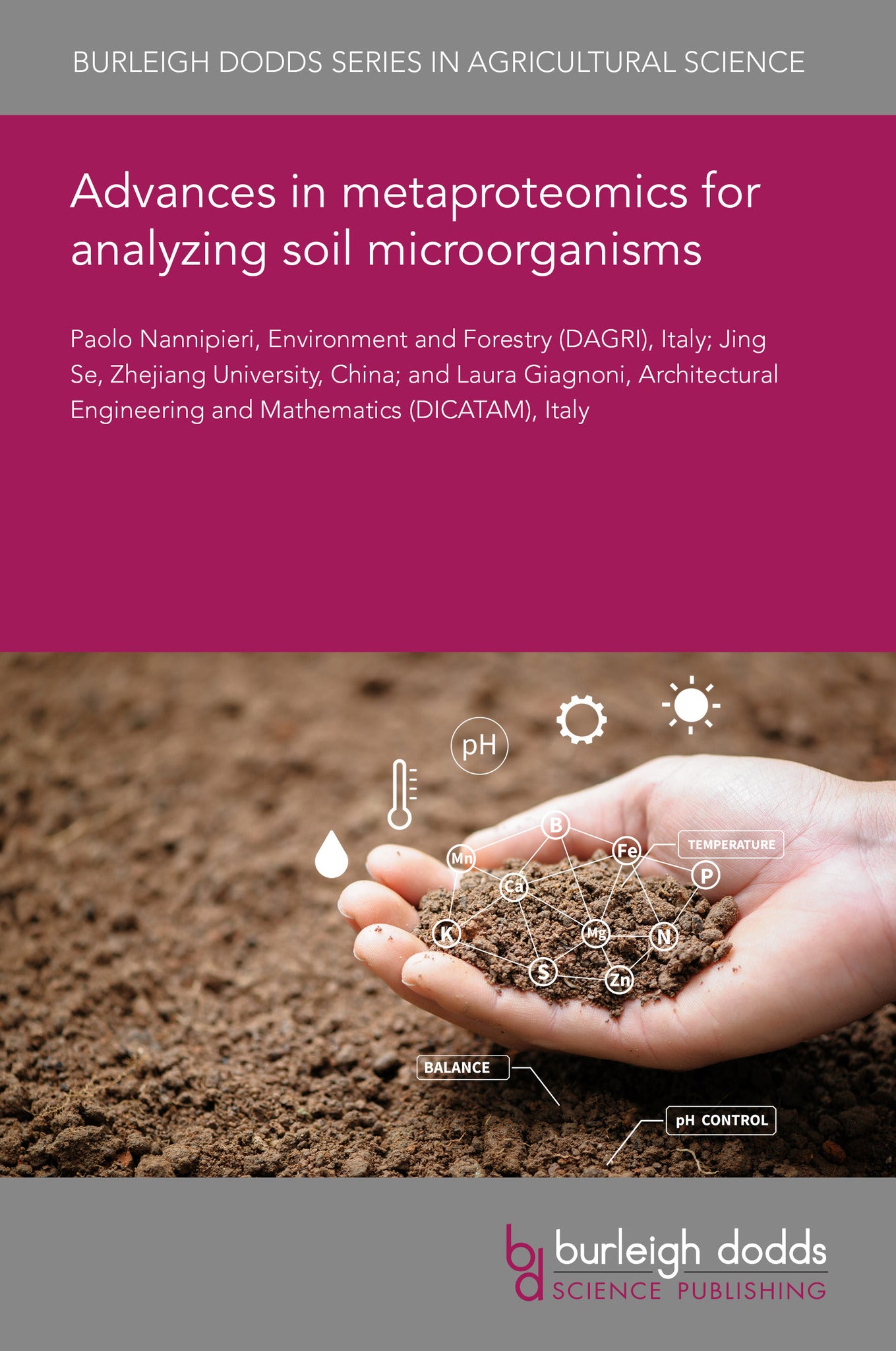We're sorry. An error has occurred
Please cancel or retry.
Advances in metaproteomics for analyzing soil microorganisms

Some error occured while loading the Quick View. Please close the Quick View and try reloading the page.
Couldn't load pickup availability
- Format:
-
29 May 2025

Soil metaproteomic, the protein profile of a sample, gives both taxonomical and functional information and has the potential to improve knowledge of mechanisms underlying the important ecosystem services by soil. This chapter aims to discuss the challenges facing protein extraction from soil, their purification, determination and assignment to available databases. The authors begin by outlining the top-down and bottom-up methods in soil metaproteomics, and their benefits and shortcomings. They then review soil protein extraction techniques, and demonstrate that protein profiles depend on the extraction method used but the number of extracted proteins is much lower than those expressed by the active soil microbiome. The authors then discuss the challenge that the large number of expressed proteins and varieties of proteins in the soil matric pose to soil metaproteomics. Finally, they explore the metaproteomics of specific microorganisms inoculated into a model soil.

TECHNOLOGY & ENGINEERING / Agriculture / Agronomy / Soil Science, Soil science and management, TECHNOLOGY & ENGINEERING / Agriculture / Agronomy / Crop Science, TECHNOLOGY & ENGINEERING / Agriculture / Sustainable Agriculture, Agronomy and crop production, Sustainable agriculture

- 1 Introduction
- 2 Protein analysis by mass spectrometry (MS) and assignment by databases
- 3 Soil protein extraction techniques
- 4 Soil studies using metaproteomics and other omics techniques
- 5 Other challenges in soil metaproteomics: the huge number of expressed proteins and different protein locations in the soil mat
- 6 Metaproteomics of specific microorganisms inoculated into a model soil
- 7 Conclusion and future trends
- 8 References



